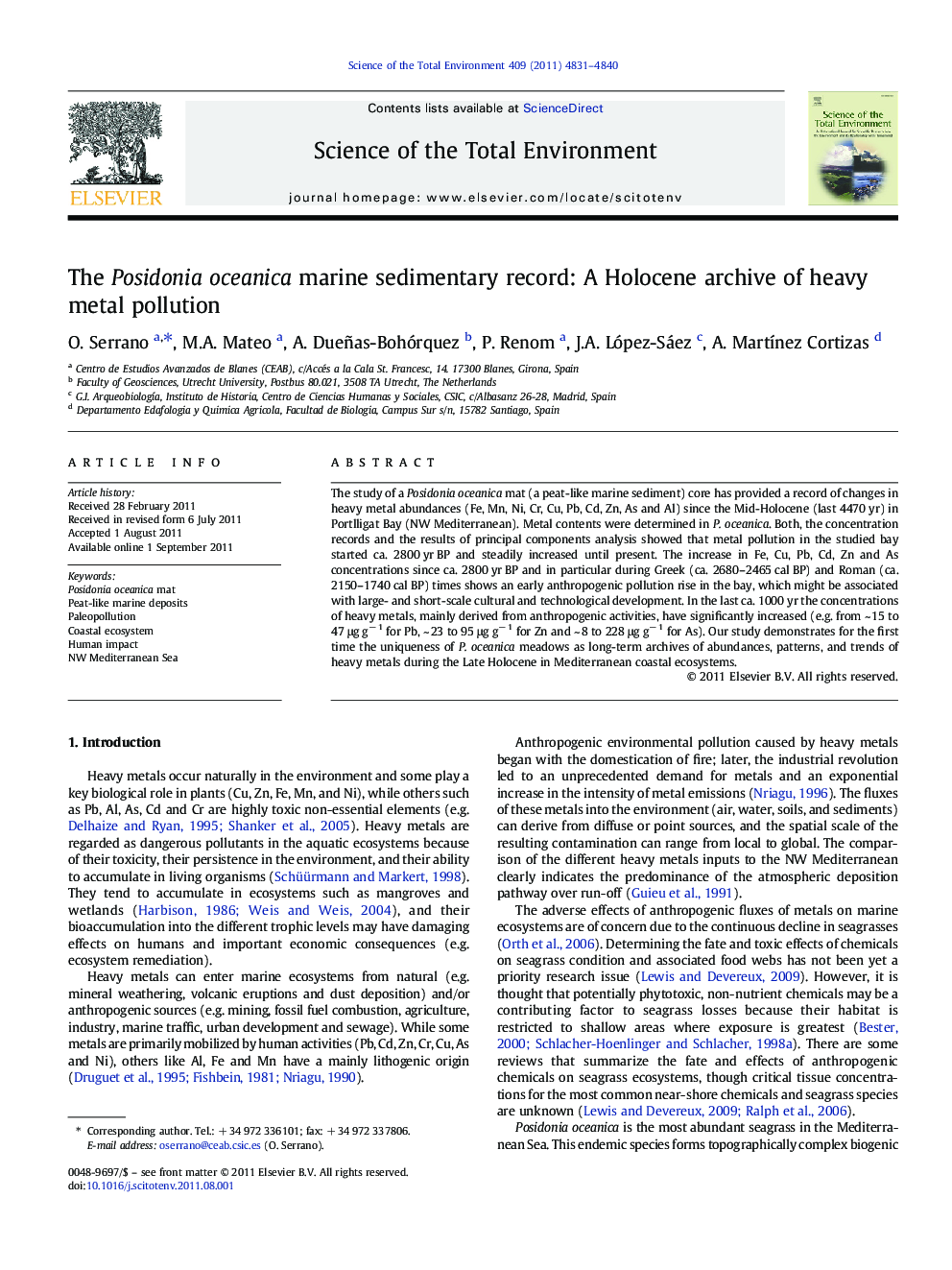| Article ID | Journal | Published Year | Pages | File Type |
|---|---|---|---|---|
| 4429973 | Science of The Total Environment | 2011 | 10 Pages |
The study of a Posidonia oceanica mat (a peat-like marine sediment) core has provided a record of changes in heavy metal abundances (Fe, Mn, Ni, Cr, Cu, Pb, Cd, Zn, As and Al) since the Mid-Holocene (last 4470 yr) in Portlligat Bay (NW Mediterranean). Metal contents were determined in P. oceanica. Both, the concentration records and the results of principal components analysis showed that metal pollution in the studied bay started ca. 2800 yr BP and steadily increased until present. The increase in Fe, Cu, Pb, Cd, Zn and As concentrations since ca. 2800 yr BP and in particular during Greek (ca. 2680–2465 cal BP) and Roman (ca. 2150–1740 cal BP) times shows an early anthropogenic pollution rise in the bay, which might be associated with large- and short-scale cultural and technological development. In the last ca. 1000 yr the concentrations of heavy metals, mainly derived from anthropogenic activities, have significantly increased (e.g. from ~ 15 to 47 μg g− 1 for Pb, ~ 23 to 95 μg g− 1 for Zn and ~ 8 to 228 μg g− 1 for As). Our study demonstrates for the first time the uniqueness of P. oceanica meadows as long-term archives of abundances, patterns, and trends of heavy metals during the Late Holocene in Mediterranean coastal ecosystems.
► P. oceanica mat records changes in heavy metal abundances over the recent Holocene. ► P. oceanica acts as a pollution filter and long-term metal sink in the Mediterranean. ► A Metal Abundance Index supports increasing anthropogenic pollution during the last 1600 yr. ► Pre-anthropic reference metal abundances are proposed. ► Metal content in P. oceanica detritus might make it unsuitable for human uses.
